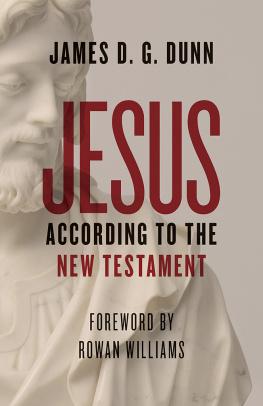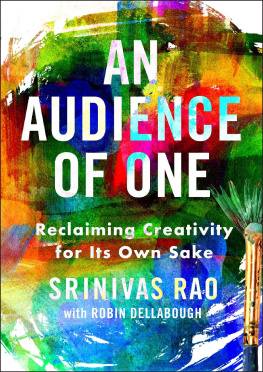
The Audience and Its Landscape
CULTURAL STUDIES
Series Editor
Paul Smithy, George Mason University
The Audience and Its Landscape edited by James Hay, Lawrence Grossberg, and Ellen Wartella
Eye on the Flesh: Fashions of Masculinity in the Early Twentieth Century Maurizia Boscagli
Art and the Committed Eye: The Cultural Functions of Imagery Richard Leppert
Youth, Murder, Spectacle: The Cultural Politics of Youth in Crisis Charles R. Acland
Viewing, Reading Listening: Audiences and Cultural Reception edited by Jon Cruz and Justin Lewis
The Madonna Connection: Representational Politics, Subcultural Identitiesy and Cultural Theory edited by Cathy Schwichtenberg
Dreaming Identities: Class, Gender, and Generation in 1980s Hollywood Movies Elizabeth G. Traube
Enlightened Racism: The Cosby Show, Audiences, and the Myth of the American Dream Sut Jhally and Justin Lewis
FORTH COMING
Girls: The Representation of Femininity in Popular Culture edited by Elizabeth Ann Kaplan
Being Indian and the Politics of Indianness Gail Valaskakis
Boys: The Representation of Masculinity in Popular Culture edited by Paul Smith
Cultural Studies
First published 1996 by Westview Press
Published 2018 by Routledge
711 Third Avenue, New York, NY 10017, USA
2 Park Square, Milton Park, Abingdon, Oxon OX14 4RN
Routledge is an imprint of the Taylor & Francis Group, an informa business
Copyright 1996 Taylor & Francis
All rights reserved. No part of this book may be reprinted or reproduced or utilised in any form or by any electronic, mechanical, or other means, now known or hereafter invented, including photocopying and recording, or in any information storage or retrieval system, without permission in writing from the publishers.
Notice:
Product or corporate names may be trademarks or registered trademarks, and are used only for identification and explanation without intent to infringe.
Library of Congress Cataloging-in-Publication Data
The audience and its landscape / [edited by] James Hay, Lawrence Grossberg, Ellen Wartella.
p. cm.(Cultural studies)
Includes bibliographical references and index.
ISBN 0-8133-2284-7 (hbk: alk. paper). ISBN 0-8133-2285-5 (pbk : alk. paper)
1. Television viewersResearch. 2. Motion picture audiencesResearch.
3. Television broadcastingSocial aspects. I. Hay, James, 1952.
II. Grossberg, Lawrence. III. Wartella, Ellen.
IV. Series.
PN1992.55.A88 1996
302.234-dc2096-14081
CIP
ISBN 13: 978-0-8133-2285-8 (pbk)
James Hay, Lawrence Grossberg, and Ellen Wartella
The genesis of this book is long and worth reconstructing. It is an allegory of sorts that involves many of the debates that have shaped audience study in recent years. Audience study in the late 1980s was fraught with both a sense of mission and a sense that no one had yet got it right. Its sense of mission had to do with the proliferation of work about the audience across various fields and disciplines. The sense that no one had got it right, however, was just as much the result of its dispersal. This book grew out of the sense of excitement and frustration surrounding the convergence and realignment of multiple disciplines and sites where studies about audience were being done at that time.
One of these realignments involved the distinction between qualitative and quantitative communication research. Qualitative research had emerged out of efforts, largely within the tradition of mass communication research, to rethink its empirical tradition by engaging critical theories that it perceived as more directly given to problems of interpretation. By the late 1980s it had become a quite recognizable project that saw itself engaged with but methodologically different from quantitative research.
Qualitative research cultivated a dialogue with critical studies in the humanities. But there remained strong perceptual differences between these fields about each other. The tradition of audience research lay within mass communication studies, which often perceived work being done in the humanities as preoccupied with texts and a formalist methodology. Spectator theory (in film criticism) and reader-response theory were often viewed in U.S. mass communication research as too laden with jargon, and perhaps even too theoretical, European, and threatening to its own turf.
Work in the humanities, on the other hand, seemed to have little need even to feel threatened by mass communication research of any stripe. If those most invested in the humanities even recognized a distinction between quantitative and qualitative research, they would have still perceived any kind of mass communication research as dealing with subjects alien to the humanities and through a scientific project and a professionalism that had traditionally distinguished the humanities from other disciplines of knowledge. On one side, qualitative research took on the problem of interpretation but seldom attempted to deconstruct its own scientificity. On the other, work in the humanities was not quite willing to recognize its own relation to other professions and its own aspiration for as critical science (either in New Criticism or imported, Europeanisms such as semiotics).
The proliferation during the 1980s of critical studies about television could be seen as one consequence of a cross-disciplinary awareness by some in mass communication research and the humanitiesthough one could argue whether television criticism bridged or exacerbated their disciplinary differences. Given the proliferation of qualitative and critical work on television, television studies generally encountered great difficulty in establishing themselves within academic departments from either discipline. But it was through television studies that the methodological and theoretical debates across these disciplines came to bear most directly in their respective treatments of the audience. The most well-known audience work centered on television, while critical studies of television became distinguished from literary and film criticism precisely for the formers interest in the issue of the audience.
The tale of television studies during the 1980s was intertwined with the growing impact and tenuous status of cultural studies. British Cultural Studies had often turned to television as a means of demonstrating or arguing certain issues about contemporary culture and everyday life. But because cultural studies was most interested in understanding media as cultural forms and medias relation to everyday life, it devoted considerable attention to the issue of the audience. Indeed television audiences often became a means for cultural studies to rethink traditional models of power and consciousness perpetuated in mass communication studies and literary and film studies. Cultural studies emphasized audiences implication in broader hegemonic formation and a complex and constantly shifting cultural politics in everyday life. Just as important, cultural studies attention to television and television audiences was informed by its more general interest in bridging sociological and textual methods in media studies while interrogating their assumptions and traditional subjects. But the 1980s, cultural studies had become one of the most vocal critics both of traditional mass communication research and of the kind of film and literary studies driven by textual, deconstructive criticism. Consequently, its discussion of audiences became quite influential across academic disciplines and departments but also stymied its acceptance in fields with strong attachments to one or the other of these methods.








